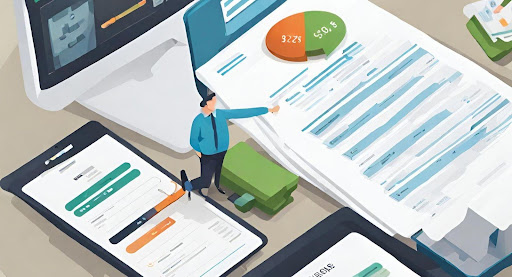
In recent years, the healthcare landscape has undergone a significant transformation driven by the rise of patient consumerism. With patients increasingly taking charge of their healthcare decisions, expectations surrounding billing and collections processes have shifted dramatically. This article delves into the profound effects of patient consumerism on billing and collections within the healthcare industry.
Understanding Patient Consumerism:
Patient consumerism refers to the trend of patients behaving more like consumers in their healthcare interactions. This shift is fueled by various factors, including rising healthcare costs, increased access to information, and the desire for greater transparency and control over healthcare decisions. As a result, patients now expect the same level of convenience, efficiency, and customer service from healthcare providers as they do from other service industries.
Impact on Billing Processes:

Patient consumerism has compelled healthcare providers to reevaluate and revamp their billing processes to meet evolving patient expectations. Traditional billing methods characterized by complex, opaque invoices and delayed communication no longer suffice in today’s consumer-driven healthcare environment. Instead, patients demand clear, transparent billing statements that are easy to understand, accompanied by proactive communication regarding costs and payment options.
Moreover, patient consumerism has accelerated the adoption of digital billing solutions, such as online portals and mobile apps, allowing patients to conveniently access and manage their healthcare bills anytime, anywhere. These digital platforms not only enhance patient satisfaction but also streamline billing and collections processes for healthcare providers, reducing administrative burdens and improving cash flow.
Transparent Pricing:
- Patients are increasingly seeking transparency in healthcare pricing. They want to know the cost of services upfront to make informed decisions about their care.
- Healthcare providers need to develop clear and concise billing statements that outline the costs of procedures, treatments, and services.
- Implementing price transparency tools and online estimators can help patients understand their financial obligations before receiving care.
Enhanced Communication:
- Effective communication between providers and patients is crucial for navigating billing processes successfully.
- Providers should educate patients about their insurance coverage, co-pays, deductibles, and out-of-pocket expenses to minimize confusion and surprises.
- Utilizing patient portals, email reminders, and educational materials can improve communication and keep patients informed throughout the billing cycle.
Flexible Payment Options:
- Recognizing that healthcare costs can be a burden for many patients, offering flexible payment options is essential.
- Providers can offer payment plans, discounts for prompt payment, and financial assistance programs to alleviate financial strain on patients.
- Embracing digital payment solutions and online portals allows patients to conveniently manage and track their payments.
Enhanced Focus on Price Transparency:
In response to patient demands for greater price transparency, healthcare providers are increasingly disclosing cost information upfront, enabling patients to make informed decisions about their care. Transparent pricing not only fosters trust and loyalty but also helps prevent unexpected billing surprises that can strain patient-provider relationships.
Furthermore, price transparency initiatives empower patients to shop around for healthcare services based on cost and quality, promoting competition among providers and driving down overall healthcare costs. As a result, healthcare organizations that prioritize price transparency gain a competitive edge in attracting and retaining patients in today’s consumer-driven healthcare market.
The Benefits of Prioritizing Price Transparency
By prioritizing enhanced price transparency in billing and collections, healthcare providers can reap numerous benefits, including:
Improved Patient Satisfaction: Transparent pricing fosters trust, reduces anxiety, and enhances the overall patient experience.
Enhanced Financial Stability: Clear communication of costs helps patients plan and budget for healthcare expenses, reducing the likelihood of delinquencies and bad debt.
Competitive Advantage: Providers that prioritize price transparency differentiate themselves in a crowded marketplace, attracting and retaining patients seeking value-based care.
Compliance with Regulations: Compliance with regulatory mandates for price transparency demonstrates commitment to patient-centered care and ethical business practices.
Streamlined Collections Processes:

The rise of patient consumerism has also spurred healthcare providers to streamline their collections processes to minimize friction and improve the patient financial experience. Rather than resorting to aggressive debt collection tactics, providers are adopting more patient-centric approaches focused on compassionate communication, financial counseling, and flexible payment options.
Additionally, healthcare organizations are leveraging technology to automate and optimize collections workflows, reducing administrative overhead and accelerating revenue cycle management. By embracing innovative solutions such as predictive analytics and artificial intelligence, providers can identify at-risk accounts early, tailor collection strategies to individual patient needs, and maximize collections efficiency while preserving patient satisfaction.
Conclusion:
In conclusion, patient consumerism has fundamentally reshaped the landscape of billing and collections in the healthcare industry. As patients continue to assert their role as empowered consumers, healthcare providers must adapt by prioritizing transparency, convenience, and patient-centricity in their billing and collections processes. By embracing digital innovation, fostering price transparency, and adopting compassionate collections practices, providers can not only enhance the patient financial experience but also improve operational efficiency and financial performance in today’s consumer-driven healthcare market.
Recent Comments